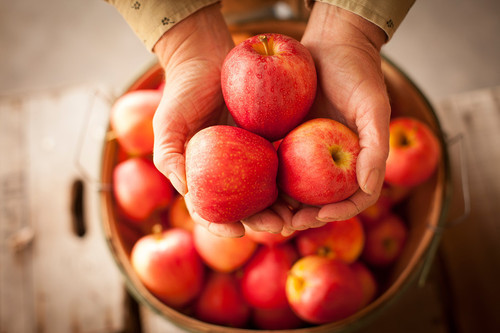The importance of fibre in a balanced diet
Fibre is a very important part of the diet and one that many people do not understand. Fibre is important for the bowels, but can also be beneficial for heart health and has the added bonus of filling you up. This means you are likely to eat less, which may help if you are trying to lose weight.
It is important when increasing your fibre intake that you do so gradually. Sudden increases in fibre consumption can lead to bloating, wind and stomach cramps. It is also important to drink plenty of water when you raise your fibre intake, as this prevents constipation.
Types of fibre
There are two main types of fibre in foods, soluble and insoluble. Soluble fibre is digested in the body, whilst insoluble fibre is not thus helping other foods to move through the intestines more efficiently. It is important to include both types of fibre in your diet, so try to choose a wide variety of fibre containing foods daily.
Health benefits of soluble fibre
Soluble fibre is thought to contribute to reducing the amount of cholesterol in the blood. Soluble fibre is also thought to slow down the absorption of sugars into the blood. This is important for people with diabetes, but also for weight management. When sugar is released more slowly into the blood, we stay fuller for longer and prevent big peaks and dips in blood sugar levels that can cause hunger cravings. Foods which are high in soluble fibre are known as low GI (glycemic index). Good sources of this type of fibre include beans, oats, nuts and seeds, most fruits, dried beans and lentils.
Health benefits of insoluble fibre
This type of fibre is essential for healthy bowels. It helps prevent constipation, keep bowel movements regular and minimizes other digestive problems. Good sources include wholemeal bread, wholegrain rice and cereals, barley, couscous, wheat bran, seeds, fruit and vegetables.
How much fibre do we need?
The recommended daily intake of fibre in the US is 14 grams per 1000 calories consumed. For example if your calorie requirement is 1500 calories per day, you should be aiming for about 21grams of fibre. For women this usually equates to about 21 to 25 grams of fibre per day, and for men about 35 to 38 grams. Try to include a range of high fibre foods, so that you are getting both types of fibre daily.
Fibre foods
To give an idea of what types of foods to include to reach your fibre requirements, here are the fibre contents of some common foods:
| Food | Serve Size | Fibre content (g) |
| Banana | 1 medium | 3.1 |
| Apple (with skin) | 1 medium | 4.4 |
| Raspberries | 1 cup | 8 |
| Wholewheat spaghetti | 1 cup (cooked) | 6.2 |
| Bran flakes | ¾ cup | 6 |
| Oatmeal | 1 cup (cooked) | 4 |
| Popcorn | 3 cups | 3.5 |
| Brown rice | 1 cup (cooked) | 3.5 |
| Wholewheat/multigrain bread | 1 slice | 1.9 |
| Split peas | 1 cup (cooked) | 16.3 |
| Lentils | 1 cup (cooked) | 15.6 |
| Almonds | 1 ounce | 3.5 |
| Artichoke | 1 (cooked) | 10.3 |
| Peas | 1 cup (cooked) | 8.8 |
| Potato (with skin) | 1 medium | 2.9 |
| Carrot (raw) | 1 medium | 1.7 |
| Broccoli | 1 cup (cooked) | 5.1 |
How to increase your fibre intake
- Choose wholegrain varieties of foods. Wholegrains may be listed under of a variety of names including, buckwheat, bulgur, millet, wild rice, quinoa, triticale, whole wheat or rye, so read labels to look for sources of these ingredients. Many products will use high fibre or wholegrain as a selling point, so it’s often easy to find these products. Try to make at least half your carbohydrates from wholegrain sources.
- Choose fresh fruit over fruit juice, as this has more fibre and less calories. Leave the skin on fruit where possible as this contains a lot of fibre.
- Include at least two vegetables at lunch and dinner.
- Eat vegetables as a snack. Dip carrots, celery or cucumbers in a hummus dip for a fibre filled quick bite.
- Cook with legumes more often. Add cooked beans or lentils to meat dishes such as lasagnes or pies to increase the fibre and lower the fat and calories. Cooked chickpeas also make a great addition to a salad or made into a dip.
- Choose wholegrain, high fibre breakfast cereal options. Add fruit for even more fibre.
- Look for fibre enriched products. If you don’t like wholegrain bread, it is now possible to buy white bread that is enriched with added fibre. You won’t get all the nutrients in the whole grains, but the fibre will still be high. This is a good choice for fussy children too.
- Add seeds, grains and nuts to home cooking. Throw some walnuts and bran into banana muffins or some sesame seeds into a stir-fry to bump up the fibre.
- Aim for five serves of fruit and vegetables per day.
- Cook potatoes in their skins as most of the fibre is in this part.
- When eating out, choose vegetable or legume based dishes. Cuisines such as Mexican, Indian and Middle Eastern often have great choices of these types of foods.
Source



No comments:
Post a Comment